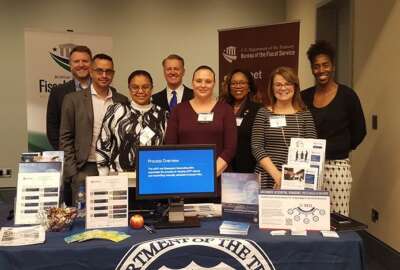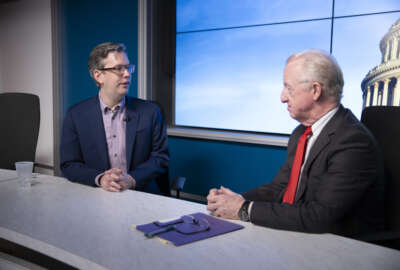
GSA’s CFO office is becoming a ‘community of excellence’ for automation
Robotic process automation as a way of improving operations and freeing people's time up for higher value work has taken hold at the General Services...
Robotic process automation as a way of improving operations and freeing people’s time up for higher value work has taken hold at the General Services Administration’s Office of the Chief Financial Officer.
CFO Gerard Badorrek said RPA’s ability to take repetitive tasks and low-value work off the hands of employees makes it exciting technology for both private and public sectors. In the agency financial space, for example, he said employees have to pull information and data from different systems. RPA can do that, and can review the meaning of that data.

“What we find is that we hire staff at a certain level and they are there to think through conclusions,” Badorrek said on Federal Monthly Insights — Intelligent Automation Month. “And part of their job is going out and gathering data so what we’re able to do with RPA is eliminate some of the burden of gathering the data.”
It’s an alternative to creating a master system to incorporate the systems which currently generate data — something which is costly and time-consuming. RPA is faster to set up and plus, Badorrek said, it is more flexible so as to change along with systems.
GSA’s CFO organization saw several RPA demonstrations, after which Badorrek went to his agency and said the technology was needed. RPA is now in use across nine different functions at GSA, as the CFO office has learned how to set up the platform and work successfully with the agency’s IT organizations.
The financial side of GSA has become akin to a “center of excellence” for robotic process automation. Badorrek said there is an RPA community of practice of more than 800 government employee members who share problems and best practices and mentor one another.
“Besides the automation, one of the key values of RPA is the ability to come in and evaluate a process to make it better because before we automate a function, we have to document the process,” he said on Federal Drive with Tom Temin. “And as part of that we re-evaluate the process. And in some cases, we found that we’re doing work we could just eliminate, but we enforce the standardization and the movement towards efficiency. So that’s very important.”
To implement RPA from a full-service perspective, Badorrek said first an organization must understand what the technology can do, come up with potential use cases and applications.
“And then you evaluate the applications and we make a decision of whether to proceed or not. So it’s much like a private sector company selling an order to another company. So we get the order to go complete the RPA development,” Badorrek said. “As part of that we actually have a Six Sigma talent that comes in and evaluates the process that’s in place and documents it because you have to precisely program the requirements of the process.”
One example is how GSA uses automation for the leasing management process across its 11 geographic regions. Another example is the approval process for credit card purchases to pull transaction data without manual input.
“There’s software out there that makes this easy, much like a Microsoft Excel macro would make it easier to pull data from different worksheets,” Badorrek said. “So the software is there, and that’s what you employ, but the change management, the process documents, the standardization, the platform are all important steps and making this successful.”
Copyright © 2025 Federal News Network. All rights reserved. This website is not intended for users located within the European Economic Area.
Amelia Brust is a digital editor at Federal News Network.
Follow @abrustWFED
Related Stories





